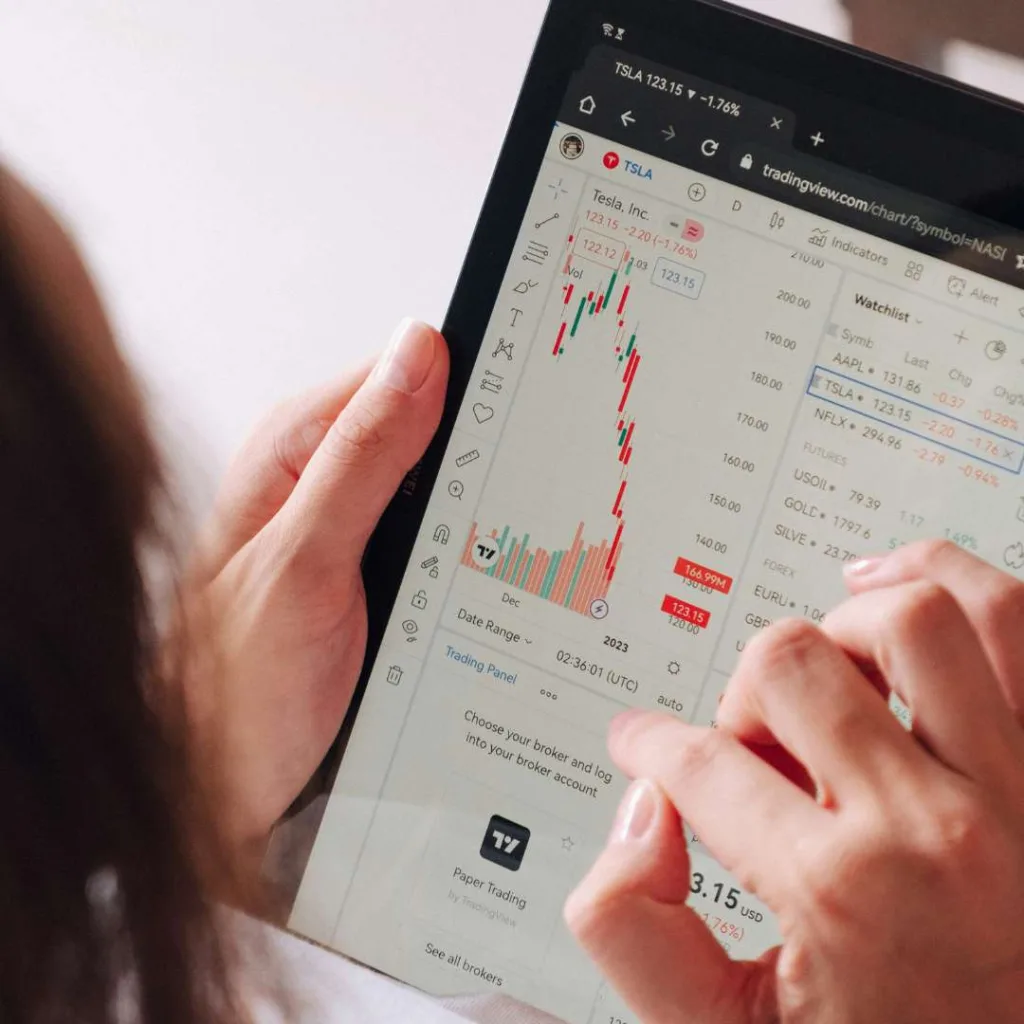Investing 101: Not Instantly Warren Buffet, But a Smart Start
The stock market: exciting, complex, and maybe a little intimidating for beginners. But don’t worry! Investing can be broken down into manageable steps.
This guide won’t turn you into an overnight investing maven, but it will equip you with the basics to avoid costly mistakes and overcome the fear of taking the plunge. And speaking of Warren Buffett, his approach is that of a buy-and-hold investor. He believes in holding onto stocks for the long term, focusing on the company’s fundamentals rather than short-term market fluctuations.
Keep in mind that this isn’t about getting rich quick, but rather a disciplined approach and a good amount of patience. As an example the S&P 500 is an index that tracks the performance of 500 large-cap U.S. companies and has a historical average annual return around 10%, including reinvested dividends. This may not seem like a big return, but we’re focused on the compounding effect over your years of investing.
We’ll try to unpack this a little more as we dip our toes in and explore how to get started.
Step 1: Your Investment Launchpad (Opening a Brokerage Account)
Think of a brokerage account as your stock market Headquarters in your hand. Here’s where you’ll buy and hold your investments. The good news? Opening one is easier than ever, often done right from your phone.
Choosing a Broker: Browse Before You Build
For user-friendliness, Robinhood is popular, but it might lack features you’ll need later. Established players like Charles Schwab, Fidelity, and Vanguard offer commission-free trades too, with a wider range of investment options like mutual funds and bonds. The best platform depends on your needs. Download a few apps or visit their websites. Pick the most intuitive one, knowing you can always switch later.
Many online brokers offer low minimum deposits and commission-free trading on stocks, ETFs, and more. Let’s expand a little more on ETFs because this is often a great place to start.
An ETF, which stands for Exchange Traded Fund, is a type of investment vehicle that tracks a basket of assets, similar to a mutual fund. Here’s a breakdown of what ETFs are and how they work:
Think of it as a Basket of Investments:
Imagine you’re at a bustling marketplace filled with all sorts of investments – individual stocks, bonds, commodities – each with varying levels of risk and potential reward. An ETF is like a pre-packaged basket, carefully curated by a professional, containing a selection of these investments.
What’s Inside the Basket?
The contents of the basket will depend on the ETF’s specific theme or goal. Here are some common types:
- Stock ETFs: These are like the “variety packs” of the ETF world. They might hold a basket of stocks that track a particular market index (like the S&P 500), a specific industry sector (like technology or healthcare), or a combination of both.
- Bond ETFs: These baskets focus on bonds, offering exposure to a variety of issuers (like governments or corporations) and maturities (short-term or long-term debt).
- Commodity ETFs: If you’re looking for exposure to raw materials like gold, oil, or wheat, these ETFs provide a way to invest without having to store barrels of oil in your garage (not recommended!).
Step 2: Making Your First Move
Now you’re ready to invest! But instead of chasing hot stocks or meme trends, consider a low-risk option like an S&P 500 index ETF. This tracks 500 of America’s biggest companies, offering broad diversification and reducing risk.
The Vanguard S&P 500 ETF (VOO) is a beginner-friendly option with a low expense ratio (basically, a fee).
- Investment objective: VOO is a good choice for investors who are looking for long-term capital appreciation. However, it is not a good choice for investors who are looking for short-term gains.
- Risk tolerance: VOO is a relatively low-risk investment. However, the stock market is still volatile, and there is always the possibility of losing money.
- Time horizon: VOO is a good investment for investors who have a long-term time horizon (at least 5 years).
Step 3: Placing Your Order
Ready to buy that first ETF? Let’s break down the order ticket.
- Symbol/Ticker: This is the stock’s ID code. For VOO, it’s “VOO.”
- Quantity: How many shares you want to buy. A single share of VOO costs around $467 at the time of this post, so start small if you’re on a budget.
- Order Type: This can be confusing, but keep it simple for now. A “market order” means you’ll buy at the current market price.
Later on, you can explore “limit orders” where you set a specific price you’re willing to pay.
Step 4: Develop Your Style (Investing is a Journey)
Legendary investor Peter Lynch suggested investing in companies you understand. While it’s not as simple as “I like their shoes, so I’ll buy the stock,” familiarity with a company can be a good starting point. I’ve personally invested in technology companies because in my line of work I’ve used several pieces of that technology over the years and I continue to become familiar not only with the hardware and the software, but my interest is also in how well the company is performing.
Developing your investment style takes time. Read books, experiment with small positions, and keep a journal to track your decisions and thought processes. You’ll learn and refine your approach over time.
Step 5: Don’t Put All Your Eggs in One Basket (Building a Balanced Portfolio)
While picking individual stocks can be exciting, as a beginner, focus on diversified funds and ETFs for your core holdings. These spread your risk across multiple companies, reducing the impact of a single stock going down.
Think of it like a balanced meal – diversified funds are your healthy staples, while individual stocks can be like dessert – enjoyed in moderation as you gain experience.
This approach might not get you rich overnight, but it provides a solid foundation for long-term investing success.
* Disclaimer: The author has no positions in any stock or ETF mentioned, however they do hold a variety of other positions not listed in this post. You are responsible for your own investment decisions. Please refer to the Innovative Nurse disclosure policy.

